Description
The Polleni Grouper (Cephalopholis polleni) is a strikingly beautiful fish with a maximum size of approximately 18 inches (45 centimetres). It boasts a robust and elongated body, displaying a vibrant combination of colours. The base colouration ranges from pale yellow to light green, adorned with irregularly shaped dark brown or black markings. As the fish matures, its colouration intensifies, making it a captivating addition to any aquarium.
Taxonomy
The Polleni Grouper belongs to the Serranidae family, commonly known as the sea bass or grouper family. It falls under the genus Cephalopholis and is scientifically identified as Cephalopholis polleni. The species is also known by other common names such as Harlequin hind or Harlequin Grouper.
Natural Habitat
In their natural habitat, Polleni Groupers can be found in rocky or coral reef areas, typically at depths ranging from 10 to 165 feet (3 to 50 meters). These areas provide the fish with ample hiding spots and crevices to seek shelter or ambush prey. The habitat is characterized by clear and warm waters, often rich in marine life, including a diverse range of corals and reef inhabitants.
Keeping Polleni Grouper:
The Polleni Grouper requires careful attention and dedication to ensure its health and well-being. It is considered a moderately difficult fish to keep due to its specific requirements and potential territorial behaviour. Maintaining stable water conditions and providing a suitable environment are crucial for the grouper’s overall health.
Special Requirements and Feeding
To accommodate the Polleni Grouper’s size and behaviour, a spacious aquarium with ample hiding places and rock formations is necessary. The tank should be equipped with a powerful filtration system to maintain water quality. These groupers are carnivorous predators, primarily feeding on small fish, crustaceans, and cephalopods. Offering a varied diet consisting of high-quality, meaty foods such as shrimp, fish fillets, and squid is essential for their nutritional needs.
How Many Should I Keep?
Due to their territorial nature, it is recommended to keep only one Polleni Grouper per aquarium. They may exhibit aggressive behaviour towards conspecifics or other similar-looking species, leading to potential conflicts or dominance issues. Providing adequate swimming space and territories within the aquarium is crucial to minimize stress and promote a healthy environment.
Lighting Preference
Polleni Groupers do not have specific lighting preferences. They can adapt well to a range of lighting intensities, from moderate to high. It is important to provide a well-lit aquarium to enhance the fish’s colours and showcase its vibrant markings effectively.
Suitable Tank Mates
When choosing tank mates for the Polleni Grouper, it is essential to consider their potential aggressive behaviour and territorial nature. Compatible tank mates include larger, robust fish species that can hold their own and are not easily intimidated. Avoid housing them with smaller, peaceful fish that may become targets of aggression or predation.
Reproduction in the Wild
In the wild, the Polleni Grouper (Cephalopholis polleni) follows a distinct reproductive pattern. Like many other groupers, they engage in the process of spawning, where eggs are released into the water column for external fertilization.
Breeding Cephalopholis polleni:
- Set up:
To facilitate successful breeding, a spacious and well-maintained aquarium with appropriate hiding places and suitable water conditions is required. It is crucial to provide a separate breeding tank to prevent potential conflicts with other tank mates.
- Courtship/Spawning:
Breeding in Polleni Groupers begins with a courtship ritual performed by the male. The male establishes a territory and displays vibrant colours to attract females. Females, being slightly smaller and less colourful, visit the male’s territory to evaluate their suitability as a mate.
Once courtship is successful, the male and female engage in an intricate dance, where they swim side by side and release their gametes simultaneously. This synchronized spawning ensures that the released eggs are immediately fertilized.
- Rearing:
After spawning, the fertilized eggs float in the water column. These buoyant, Polleni Grouper eggs possess a sticky outer layer, allowing them to adhere to the substrate or other surfaces in the tank. The eggs require a consistent water flow to prevent settlement on stagnant areas.
The eggs undergo an incubation period, which typically lasts around 24 to 48 hours, depending on water temperature. During this time, it is crucial to maintain stable water parameters to ensure the successful development of the embryos.
Once hatched, the larvae enter a pelagic stage, where they drift with the water currents. They possess a yolk sac, which provides essential nutrients for their initial growth and development. The larvae go through various morphological changes and gradually develop into juveniles.
Sexual Dimorphism
Sexual dimorphism is evident in Polleni Groupers. Males typically display more vibrant colours and larger size compared to females. The males also develop elongated rays on their dorsal fins, enhancing their overall visual appeal.
Distribution
The Polleni Grouper is naturally distributed across the Indo-Pacific region, including the Red Sea, Indian Ocean, and Pacific Ocean. While there may be captive-bred line-bred strains available, the original wild fish are found in these areas.
Summary
The Polleni Grouper, Cephalopholis polleni, exhibits fascinating reproductive behaviours, including courtship rituals and external fertilization. Breeding requires a well-prepared breeding tank, synchronized spawning, and suitable rearing conditions for the eggs and larvae. Sexual dimorphism is observed, with males displaying vibrant colours and larger size. This stunning species can be found in the Indo-Pacific region, showcasing its natural beauty and importance in marine ecosystems.
The Fish pictured here are representative only and the livestock you receive may vary in pattern, coloration, and shape.

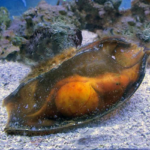
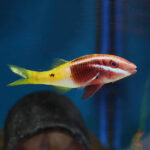
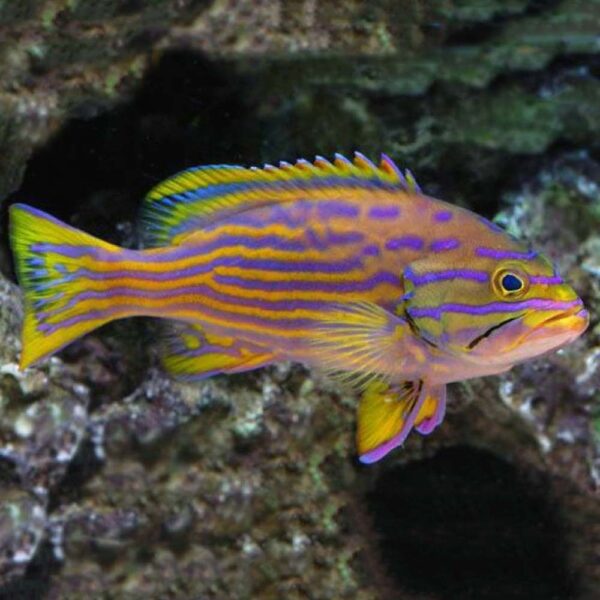


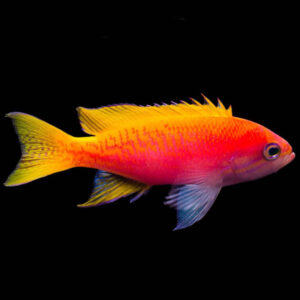
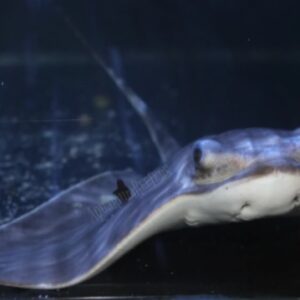
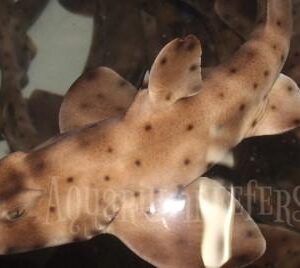
Reviews
There are no reviews yet.